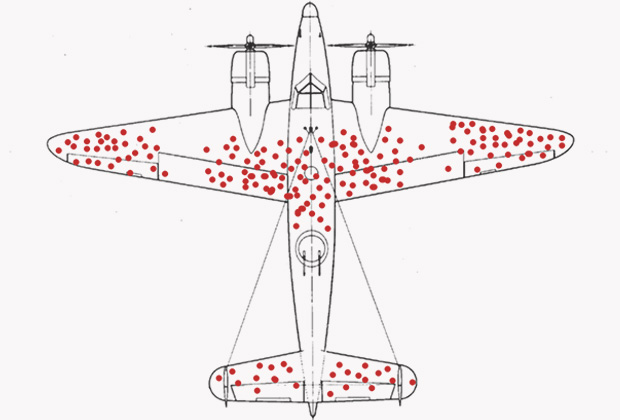In the image below, the red dots represent bullet holes in planes returning from war. The goal was to increase the number of planes coming back home.
Take a minute. Where would you reinforce the plane?

Abraham Wald's decision was to reinforce the parts that had no red dots. A plane with damage in those places didn't come back.
The beauty of data-driven decisions is that one must understand the nature of the data before making a decision.
Digital Marketing is Overwhelmed by Data
With cookies going away, targeting and measurement in digital marketing are heavily impacted. We've all heard that. But let’s take a closer look to understand it better.
When you visit a webpage, your browser stores several cookies. Some are from the site you are visiting, while others are from various platforms. These are called third-party cookies. The issue isn't with storing the cookies but with the fact that the call to the server is no longer possible, which means we lose the ID that identified the device.
Advertising platforms used these IDs to track devices across the internet. By tagging several sites, they could see that someone visited Bloomberg, saw an ad, didn't click, but then bought a product on your website. This was known as a post-view conversion. Without third-party cookies, that across-the-web ID is gone. Since less than 0.5% of people actually click on ads, how will we know if our campaigns are reaching the right people?
How will we know if our engagement campaigns are leading to sales?
Conversion campaigns are less affected because they are closer to the sale and easier to link to revenue.
Post-view conversions were the backbone of data for attribution models. Without them, we lose path-to-conversion data, which affects multi-touch attribution models. These models were machine learning algorithms that provided Return on Ad Spend (ROAS).
But not all is lost.
While we’ve lost the deterministic and brute-force calculated ROAS, we can still use statistical test designs: experiments.
Randomized controlled tests are a science-based method to measure the incremental lift of an intervention. They are used in many fields: social sciences, medicine, brewing, agriculture, and, of course, marketing.
Experiment-based ROAS is important for all of us in digital marketing. It allows us to measure the true impact of our campaigns and make informed decisions based on statistical evidence.
Stay tuned for more on how to adapt to this new landscape and leverage experiments to optimize your marketing strategies.
Tying It All Together: Understanding and Adapting
Just as Abraham Wald's analysis led to reinforcing the less obvious but crucial parts of the planes, we must understand the nature of our data to make effective decisions. In digital marketing, this means adapting to the loss of third-party cookies by embracing alternative methods like statistical experiments.
By focusing on experiment-based ROAS, we can continue to derive meaningful insights, specially for understanding how to allocate budget effectively.
If you are interested, I'm launching a course on the basics of strategy and how to develop a learning agenda. You can read more about it here.
Follow me on Linkedin!